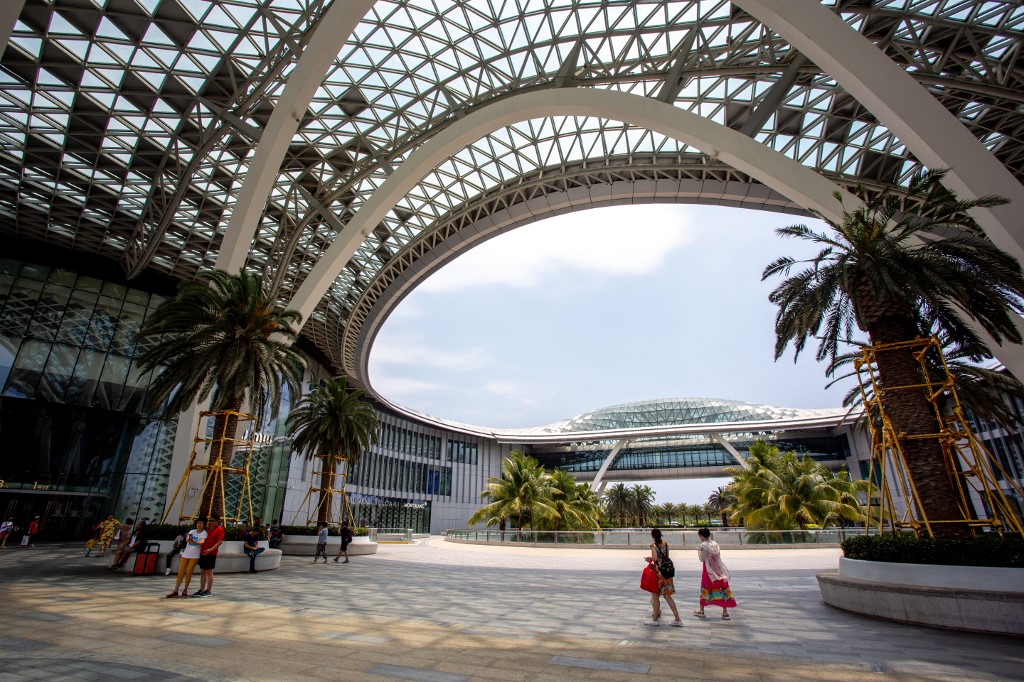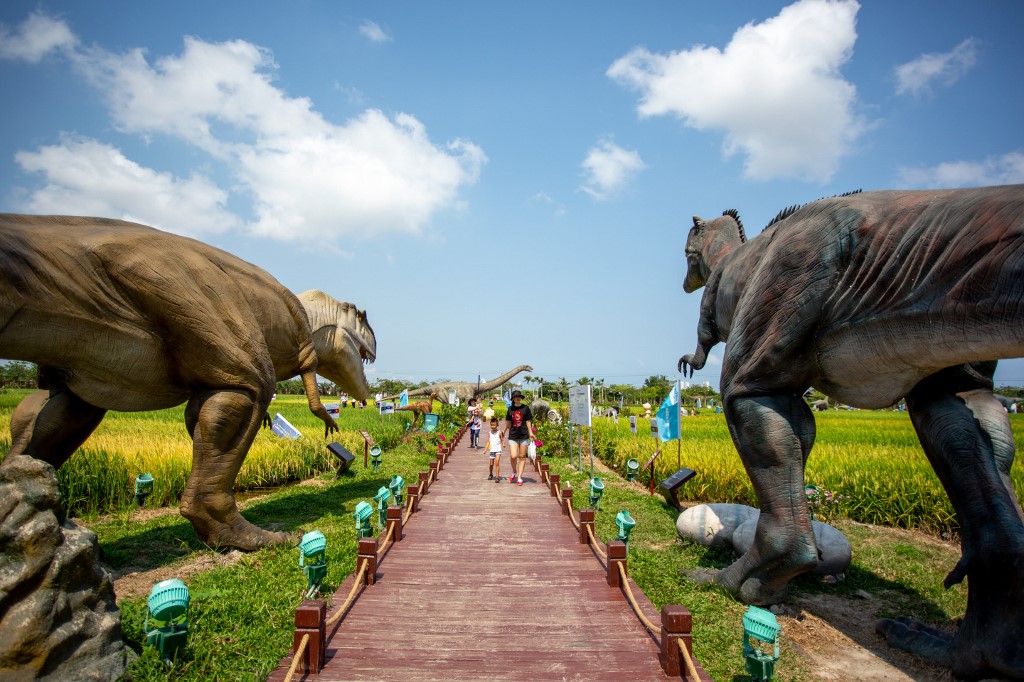At the Bo’ao Yiling Life Care Center on China’s island province of Hainan, a salubrious odor of herbal medicine pervades the warm tropical air. Cool white walls contrast with green jade carvings on elegant mahogany furniture. A seated elderly patient practices calligraphy, overlooked by a silk scroll painting of the sage Confucius. To the silvery tones of the classical, plucked guzheng, his brush traces out fluid, meditative arcs.
“We believe that good, overall health is not just physical, but also mental and spiritual,” says the center’s marketing manager Li Lijun. “Calligraphy has been practiced as a form of contemplation since ancient times. To add to patients’ regular therapy, our masters here are on hand to show them how.”
Traditional Chinese Medicine (TCM), and indeed healthcare in general, are part of a push to develop tourism in Hainan. By capitalizing on favorable government policies, its tropical climate and unique cultural heritage, China’s southernmost province is building itself into a leading destination for international travelers.
Medicine
The Lecheng International Medical Tourism Pilot Zone – inland from the white sands and coconut palms of Hainan’s southeast city of Bo’ao – is leading the effort. Since 2013, preferential policies have spurred the development of a 20 square kilometer development area there, straddling the clear river Wanquan.
New drugs and technologies not yet allowed by China can be used in the zone, as long as they are permitted in the US or Europe. Stem cell research can be performed, together with other cutting edge fields that are normally heavily restricted in China. Foreigners can set up majority-owned businesses. And no permission is needed to hold large, international conferences.
Twenty seven projects have been started in the zone to date, with a third completed so far. Three are already operating. Among them is the Yiling Life Care Center; a swanky, five-star hospital devoted to TCM.

In the hospital’s initial consultation area, Director of International Cooperation Liu Jialin explains TCM’s enduring and widespread appeal. “If the practice of TCM has flourished for thousands of years, that’s no doubt because of the culture that surrounds it,” he says. “Our consultation area is set out in the traditional way to embody that culture. International guests love the experience.”
A patient’s first consultation after arriving for a checkup is with a TCM practitioner, who will listen them describe their state of health and check their pulse. Prescription in hand, they may then proceed straight to the dispensary, where doses of pungent medicine are brewed. Alternatively, on the way they may receive physical treatments; tui na manipulative massage, acupuncture or suction cupping.
According to Liu, the Center already has 270,000 members from within China. Because TCM deals as much with prevention as with treatment, so they come when they have nothing in particular wrong, or just non-specific complaints: fatigue, aches and pains and suchlike. Their annual fee of 10,000 yuan includes four visits each year.
TCM’s holistic approach, mild action and lack or side effects make it attractive as an alternative to mainstream medicine for treating chronic conditions. Therein lies its appeal to westerners.
“We normally spend our vacation on a beach in Europe or Thailand,” says Vladimir Kudriavtsev, a dealer in catering equipment from St Petersburg, who has come to the Center with his partner Anna Nasibullova. “Anna read about this place in an in-flight magazine. We realized that in Hainan we could combine our beach holiday with TCM, which we knew to be very good.”
While Vladimir suffers from joint problems, Anna has lower back pain. Both of them attribute their conditions to intensive sport practiced from an early age. Russia’s cold weather and heavy diet, they add, is of no help. For around 10,000 yuan per week, the Center gives them a daily therapy regimen including massage and acupuncture.
Six weeks into the fortnight they have booked at the Center, the couple are identifiable by their remarkable relaxed aura of well-being; like they’re on a second honeymoon or perhaps even better. “It’s a very good feeling,” Vladimir remarks.
In Hainan’s low season, from April to October, rooms in five-star hotels can be had for as little as 700 yuan, or $100 per night. Visa-free access for up to 30 days was last year granted to citizens of 59 countries including Russia, Germany, France and the US. The island’s status as a free trade zone means there is no tax on luxury goods. So in the Sanya International Duty Free Shopping Complex, which is two hours’ drive down the coast from Bo’ao, prices for the 300-plus brands of product on offer – from Gucci to Ray-Ban – are typically between 15 and 35 percent cheaper than in mainland China.
As for medical tourism, by 2030 the Lecheng Pilot Zone aims to have at least 100 projects operating, offering a full range of services including cancer treatment, plastic surgery, anti-aging treatment, health management and rehabilitation. Total employment will be at least 41,000. Five million patients are expected each year.
Food
In addition to furnishing ideal conditions for relaxation and recuperation, Hainan’s balmy tropical climate also makes it one of China’s best places for farming. Rich volcanic soils and plentiful monsoon rains can yield three crops of rice annually. With year-round growing, the island is becoming the nation’s biggest winter supplier of fruits and vegetables. Hainan’s lack of industry makes its air the cleanest in China, with air quality excellent by international standards.
“Many children today don’t know where rice comes from because they grow up in cities,” says Yang Yanzuo, vice general manager of the island Paddy Field National Park. “This is strange when you consider the importance of rice in Chinese culture.”
Inland from the southern city of Sanya, the Park offers rice planting activities as a way for urban youngsters to return to their roots. They can also catch fish for a barbecue, or stroll through lush paddy fields where over 500 breeds of rice are under cultivation. To make their visit entertaining as well as educational, there are life-size models of every one of the 277 species of dinosaur whose fossils have been discovered in China.

In this area in the 1970s, the agronomist Yuan Longping discovered one of two strains of wild rice that he would hybridize for major breakthroughs in food production. His “oriental magic rice” pushed yields up towards an incredible 1,000 kg per mu (the traditional Chinese unit of area equivalent to about one-fifteenth of a hectare), solving the problem of hunger not just for millions in China but also throughout the developing world. Today he is known by Chinese as the “Father of Hybrid Rice”, and the park’s research base is named after him.
From traditional crops to hi-tech farming methods, another agri-tourism attraction in Hainan is the Lingshui Modern Agricultural Demonstration Base. Forty kilometers from Sanya, the base has bred new varieties of fruits and vegetables and trained over 60,000 farmers. It uses tall, rotating stacks of growing trays in huge greenhouses to increase area yields by as much as six times over regular field cultivation. Visitors have been given tours since it was opened in 2015.
Culture
With urbanization continuing at a breakneck pace, the traditional cultures of many of China’s 55 recognized ethnic minorities are under threat. Hainan’s indigenous Li people, who make up about 16 percent of the island’s population and speak a language similar to Thai, are no exception. A short drive into the misty hills north of Sanya, the government has set up the Betel Nut Valley heritage park to preserve and showcase their culture. Another ethnic minority culture on show in the park belongs to the Miao. They make up less than one percent of the population of Hainan, but are found in larger numbers across southern China and Southeast Asia too.
The Li have lived in mud-walled, thatched huts in the lush forests around central Hainan’s Wuzhi mountain, and followed a spirit worshipping, totemic culture since ancient times. UNESCO added the Li’s rich tradition of textile techniques – spinning, dyeing, weaving and embroidering – to its list of intangible cultural heritage in urgent need of safeguarding, in 2009.
Beautiful hand-woven brocades – replete with totemic motifs such as frogs, oxen and other elements of nature – can be purchased for 8,000 yuan or more in the demonstration area. Eighty two-year-old Fu Jinhua, whose face and body are tattooed in the traditional way, is there to show visitors her craft.
Fu works from an intricate design that has been completely planned out and held only in her mind. One of her fine creations may take months to complete. During school holidays, she teaches her grand-daughter her skills. She also says she is willing to hand them down to anybody else, provided they are sincere and dedicated, and can spend at least two or three months to complete an apprenticeship.
The Hainan government has responded to dwindling numbers of practitioners of the craft by funding traditional textile business, paying for young people to train, and staging exhibitions to arouse interest. But as the park’s general manager Ji Guo admits, preserving traditional Li culture is an up-hill battle. Youngsters these days leave to live in the city. Few are willing to dedicate themselves to weaving and embroidery. In the same way, no-one wants to have their face tattooed, or live in a traditional hut that lets in mosquitoes and can be destroyed by a typhoon.
In addition to showcasing traditional Li living and crafts, Betel Nut Valley offers lively cultural performances and traditional food as well. The government guidebook describes it as “a living fossil” of Hainan tradition. For visitors eager for a taste of an exotic culture while it’s still around, it’s well worth a visit.
